The Insurance Times editorial team gives you a rolling update of events as they happen from The Crystal in London
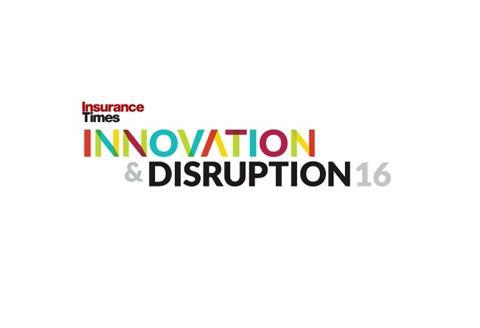
17.47 Conference chair Kate Russell is giving her closing remarks, wrapping up what has been a fascinating day of sessions and speeches.
17.46 Audience poll: Insurtech start-ups are most likely to disrupt insurance in the next two years.
17.44 Audience poll: biggest challenge to taking innovation forwards is organisation culture barriers.
17.43 To think the industry can do it all itself in naive. It should adopt an omni-channel approach to innovation.
17.41 Bell says it is important for insurers to understand how people want to be spoken to. Some customers would prefer exclusively hand-written letters. Others want WhatsApp.
17.36 Crane: There is so much the insurance industry can do to make itself more convenient and customer-need-centric. A lot of it is simple.
17.30 Crane: The industry has to choose. Technological development will happen, but the choice is whether the insurance industry does it itself or has it done to it from outside.
17.27: Bell says that Millennials might be put off insurance because they have a poor understanding of it: they assume it is just about cars and forget that galactic space voyages, for example, are also insured.
17.25: Evans says getting millennials interested in insurance is about culture. “The appearance [of the industry] is changing but the fundamentals aren’t. Human beings are stil human beings.”
17.21 LV=’s Crane: “Insurers have a first-mover advantage. If we can disrupt ourselves, we can do a better job of it than anyone else.”
17.18 The final panel has taken to the stage: Chubb’s Ruth Polyblank, Diect LIne’s Mark Evans, LV=’s Mike Crane and Ambition First’s Emma Bell.
17.17 Tenniglo. Insurers biggest challnege is to catch up with customers. “Customers’ needs have already changed. If I get more than one letter a week I’m annoyed.”
17.15 Tenniglo: “We tried to make insurance as simple and sexy as possible. Our policies read like a novel.”
17.13 McGuinness: Insurance is now becoming more interesting to millennials because a lot of the fintech developments are happing in the insurance industry.
17.11 Felix Tenniglo and Oliver McGuinness are now taking questions from the floor
17.10 McGuiness: “Digital disruption is great but digital is just an enabler to make the industy relevant to its customers.”
17.07 McGuiness: Insurance has one of the most advanced, highly regulated supply chains in the world. But call centres cannot move beyond tackling a claim and, for example, offer them advice. “There is something fundamentally wrong with that.”
17.04 Simplicity sells: customers are more likely to recommend a service they find easy to use.
17.02 When consumers were asked who they would trust to provide a connected home service, insurers were second on the list next to the government, so there perhaps is not as big an issue with trust as supposed.
17.01 McGuinness: “We have got a huge opportunity to look at what we can offer our customers.”
16.58 Innovation Group’s Oliver McGuinness has taken to the stage to discuss how to re-engage the customer.
16.56 InShared’s goal is to achieve the lowest cost and the highest sustomer satisfaction, says Tenniglo.
16.55 InShared’s capabilities are made possible by its Cynosure IT platform
16.52 More complex claims are handled by the call centre and then, if possible, returned to the automated process.
16.50 InShared once settled claims the old way, but it now has a fully-automated process. It believes 60% of claims are relatively simple, and so can be reported online.
16.46 Tenniglo: “It is easy to attract people to your site. It is all about conversion.”
16.45 InShared changed its pricing model 120 times in 2015.
16.42 Because it relies heavily on automation, InShared has 37 full-time employees
16.37 InShared, based in the Netherlands, budgets to pay out 80% of the premium in claims. If it pays less, it refunds the customer the difference.
16.35 Tenniglo: “IT is just a facilitator. I know in your companies it doesn’t feel like this. It is so difficult to get out of the spaghetti of systems.”
16.34 Tenniglo said he expected a young customer base, but InShared average customer base is aged between 40 and 70. “The online generation isn’t young anymore. It’s all ages. We are all digital from the moment we wake up to the moment we go to sleep. It is either e-bnusiness or no business.”
16.30 InShared chief executive Felix Tenniglo has just taken to the stage to tell the story behind his company - a 100% internet-based insurer.
16.19 The final start-up to take the stage is Spixii, a chatbot solution for engaging with customers. It is essentially a digital insurance agent.
16.06 Now presenting is RightIndem, which aims to help insurers tackle customers’ claims more quickly and efficiently by disrupting the call centre.
15.55 Next up is Domotz, a connected home solution.
15.47 First up is CoVi Analytics, which aims to simplify regulatory compliance.
15.35 Four start-ups are gearing up to do three-minute pitches to a panel comprising Startupbootcamp’s Sabine VanderLinden, Allianz UK’s Jon Dye, Hero’s Adam Levene and Schlumberger’s Simon Bittleston.
14.58 Bittleston says that it is difficult to create venture capital type structures, where innovators reap huge returns if their ideas are successful, in large organisations. “You get a lot of pushback from the bean-counters”, he says.
14.56 Bittleston: When setting up research and development units, “the general rule is not to over-manage the teams”.
14.53 Hughes: “We actively include innovation as part of our recruitment process.”
14.50 When asked how small companies can innovate, Hughes says that if she had a small company, she would start with developing an innovative culture.
14.47 Bittleston: We see regulators as people we can work with and educate about the solutions.
14.44 Hughes: Don’t underestimate the human element and how getting people together to be really creative can be really powerful.
14.38 Hughes: ”Once you have got the top level buy-in for innovation, everything else falls into place.”
14.37 Hughes contends that it depends on the project whether the individual who came up with the idea continues to be involved. If the person who came up with the idea has no idea how to implement it, then it needs to be taken forward by someone else.
14.35 Bittleston: “People who come up with ideas need to be part of what follows.”
14.33 Bittleston: Process allows you to repeat what you have done in the past but doesn’t tell you how to behave in the future. You have to come up with ‘anti-processes’.
14.32 Simon Bittleston and Hardev Hughes are now taking questions.
14.30 Hughes says that while the bulk of Rolls Royce’s work is evolutionary, the company also wants to shock and disrupt the market. An example of this is autonomous vessels.
14.26 Winning ideas in Rolls Royce’s Innovation Portal often come from different departments than would be expected. Hughes says that if you are trying to innovate, therefore, the worst thing you can do is simply gather the people in your own department together, as you will end up with the same old ideas.
14.24 Leadership is important for innovation at Rolls Royce, says Hughes. Good leaders need three key skills: to be able to communicate what good looks like, to be good listeners and and to know how to transform a good idea into value for the company.
14.22 Rolls Royce has an initiative called High Performance Culture that enables people to think outside the box, says Hughes.
14.20 Hughes: “Innovation is our competitive advantage. If we don’t innovate, our competitors will supersede us in all our marketplaces.”
14.19 Last year Rolls Royce spent £1.2bn on research and development.
14.16 Rolls Royce’s Hardev Hughes has taken to the stage for her presentation on blending the old and the new when innovating in a complex industry.
14.15 The lessons Schlumberger has learned is to give people independence to innovate and reduce the impact on the individual for failure.
14.12 In research and development, bonuses are often paid when projects are completed. But Bittleston says that Schlumberger decided to pay R&D bonuses when products were actually delivered.
14.09 Not talking about failed projects allowed people to do things they would ordinarily feel self-concious about, Bittleston says.
14.07 When Schlumberger innovates it wants the process to be haphazard and likes the results to be surprising, Bittleston says. Sometimes, experience can get in the way with innovation because people have preconceptions of how things should work.
14.01 Bittleston: “You live and die by technology in such a company.”
13.58 Schlumberger uses its own services alongside those of competitors so it can ensure it always has the ’best of the best’ technology.
13.56 Bittleston says one of the most successful changes was an update to how the company distributed software to its customers, giving customers more access. This converted a modest market share into a large one.
13.50 In the first breakout session of the afternoon, energy company Schlumberger’s Simon Bittleston takes to the stage to discuss what happens after a company decides to innovate.
12.40 Gaut: “Some of our regulation is for an age that no longer exists. We have some things to sort out around data and privacy laws. It probably needs to come back to the individual owning the data and knowing where it goes.”
12.38 Q: What is the effect of regulation?
12.32 Kassir: They need to understand the technology and then look back the value chain to see where it can affect the business and customer.
12.32 Q: What do you need from insurers to make the technology work?
12.30 Gaut: “There is going to be a change from a personal relationship with an insurer to a corporate relationship but there will also be a choice.”
12.30 Q: Where does the Internet of Things leave the insurer and their customer?
12.28 Gaut: “It is a massive societal change we are going to have to think about.
12.26 Kovac: “Innovation always provokes fear. You cannot have one without the other. There is the potential it will take away jobs, but the types of jobs that will be replaced with machines are the types of jobs that are not good for humans.”
12.20 Q: As the growth of the machine continues will it lead to social implosion?
12.40 Q&A with Kovac, Kassir and Gaut.
12.11 In the future, drones will not just be used for inspections, they will be used to rebuild structures.
12.11 What will be the Implication of technology in 20 years and how will robotics influence us? 1. How materials and goods are transported. 2. Information flows and inspections. 3. Architecture.
12.09 The drone industry is in its infancy. Over 500,000 drones are sold each year and it is an extremely thriving industry.
12.07 Mirko Kovac from Imperial College London aerial robotics lab talks about the transition from robotics to drones and beyond.
12.05 Kassir – Through the internet of homes, we believe an insurer can improve its renewal rate by 15% and reduce its claims by 25%.
11.59 Kassir - The Internet of Things will affect the industry in three big areas: reduction of risk and premiums, data and insight and new customer relationships.
11.57 A lot of people use The Internet of Things, but most people do not know what it is.
11.54 “The Internet of Things is in its infancy. There are a lot of technology experts out there innovating things but it needs to appeal to the customers.”
11.50 “Technology provides opportunity but it is how we respond that makes the difference” – Kassir
11.49 British Gas director of connected homes Kassir Hussain talks about Hive, the company’s wireless smart products and connected homes initiative.
11.47 Gaut – “This connected world is going to impact every area of our life. We are going to see a growth in machine learning.”
11.45 So what’s on the horizon?
11.44 In commercial lines the industry can take data and apply it to commercial lines – Gaut.
11.43 “We have seen Internet of Things in personal lines, with telematics and organisations introducing things into the home. In commercial lines we see that as the biggest opportunity in the short term.”
11.41 The Internet of Things has led to a point where the industry can create tailored policies but it potentially creates an uninsurable underclass, Gaut.
11.35 Gaut – Changing behaviour is creating ”digital desire lines” unique to the individual. This is what the ‘Internet of Things’ has created.
11.25 [After the break] in Stream C – Harnessing the power of the Internet of Things – SSP chief technology officer Kevin Gaut [this seminar is one of three Streams taking place simultaneously at ID2016]
10.36 Brauer is talking about the 2016 Edelman trust barometer comparing how society trusts businesses and corporations more than the government.
10.30 Bots need to have the personality of the company.
10.30 Artificial Intelligence bots have great potential in the insurance industry.
10.22 Goldsmiths University institute of management studies and founder Chris Brauer on technological change and disruptive shifts that are yet to come.
10.13 Jubraj: The regulator needs to be educated to understand what some of the challenges the carriers are experiencing. There is an effort to simplify things, but we need to push ourselves more.
10.13 Blanc: I don’t think it is conservative. But as long as you can move on after a failure, that capability exists today. We have a lot to do, but we have changed a huge amount,
10.12 Q: How do your overcome the conservatism in the sector?
10.10 Blanc: The fact is if you go to any broker or insurer, their strategy is generally the same, but the key thing is in the execution and that is what will make the difference.

10.09 Whitehorn: “The industry is facing a crisis of disruption, but the winners will be those that give customers what they want.”
10.07 Whitehorn: The human interaction aspect of insurance is really important. Insurance is more than just about technology, it is about relationships. If you can be disruptive about getting the cost down, but providing more convenience for the customer, that will be more successful.
10.05 Roy Jubraj: We have to tackle leadership. Change has to come from the top and utilising technology advancement.
10.04 Q: My concern is you are preaching to the choir. What about the other 150,000 people in the industry not here today.
10.03 Q&A time with Blanc, Whitehorn and Jubraj.
10.02 Innovation is happening and the industry has no choice but to play.
10.00 One of the biggest issues the industry has is culture and skills sets.
09.55 Now a talk from Accenture’s Roy Jubraj about the changing industry.
09.51 Blanc: “We are constantly threatened by what is happening in our sector, but what about us moving into other sectors?”
09.49 Blanc: “Consolidation means that insurer aspirations can be global and specialist, but what does it mean for the smaller insurers trying to survive in a difficult market?”
09.49 Blanc: Disintermediation is entering into commercial lines.
09.47 Blanc – Over 85% of interactions that take place in the next five years will be automated.
09.46 Blanc – The future looks like analytic engines where your computer is listening to customer conversations and coming up with requirements.
09.44 Personalisation and Internet of Things – moving from pooled risks to something that is more personalised.
09.43 Customer-centricity – every insurer is looking at how we move from selling products to servicing customers.
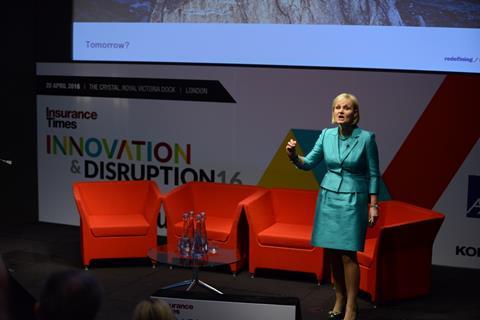
09.43 AXA UK chief executive Amanda Blanc talks about things the industry does well and also reasons for change.
09.40 To make an online agency work you still needed local agents to go round and see customers. Whitehorn says it is not just about market research but also about what customers really want.
09.40 Whitehorn talks about how online estate agency Purple Bricks was set up.
09.40 “People wanted perfect acoustic … Instead of being a white elephant it is the second biggest entertainment venue in the world.”
09.39 Whitehorn talks about building the SSE Hydro in Glasgow.
09.36 To get the spaceship project running Virgin used ‘Kelly’s Rules’.
09.34 Whitehorn is talking about how Virgin developed its spaceship
09.30 Since Virgin has been running its franchise the number of passengers has risen to 28 million
09.29 “Don’t just listen to what the pundits. Listen to what the consumers want.”
09.29 “Use market research to interpret ideas.”
09.25 “Innovation is not about being a pioneer but taking ideas and bringing them forward.”
09.20 “Thinking about your customers goes hand in hand with innovation.”
09.16 “Innovation is not a new thing, but it has been a buzzword since 2010.”
09.10 Former Virgin Galactic president Will Whitehorn talks about what it takes to be a pioneer. He talks about the rise of Virgin from its early days in music and records to trains, planes and now space.
09.02 Chair BBC Click presenter Kate Russell gives her opening remarks
09.00 Innovation and Disruption 2016 kicks off.






























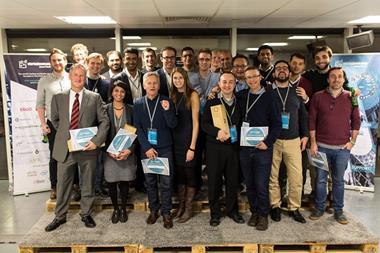
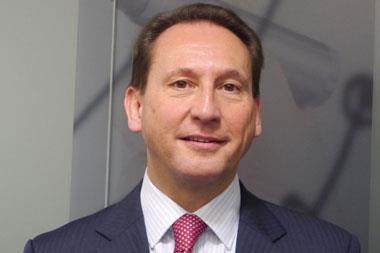
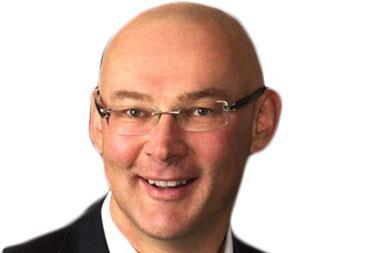

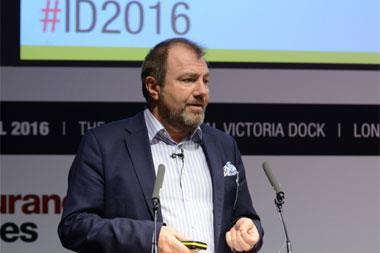



No comments yet